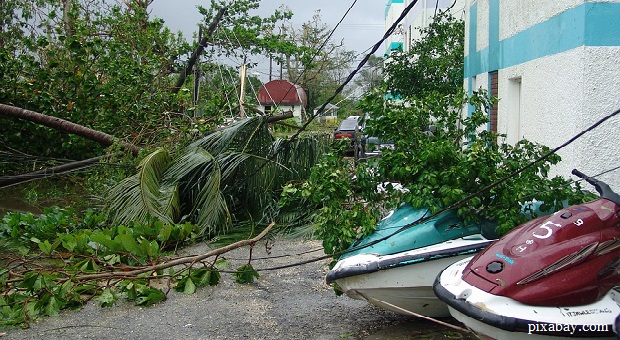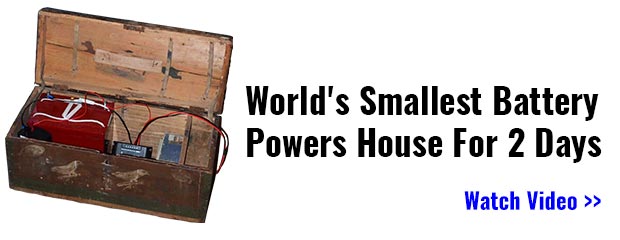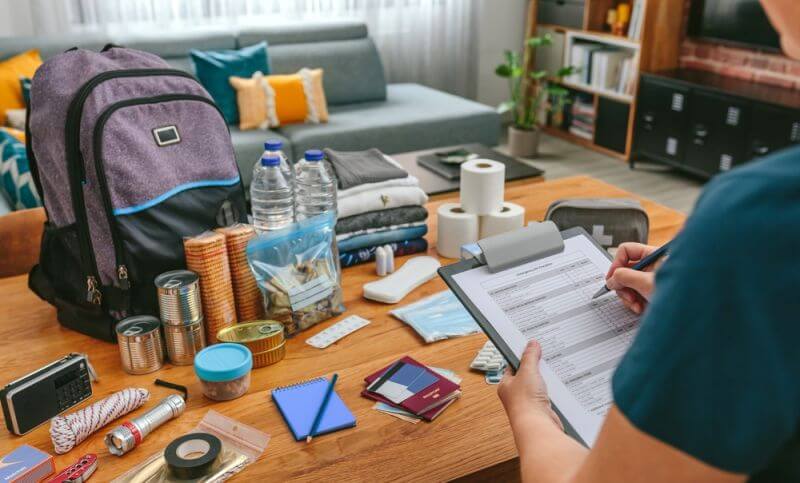Our country has been plastered by hurricanes lately.
First there was Hurricane Harvey, which turned much of Houston, Texas into a lake, along with Corpus Christi, Rockport and the surrounding area. Then there was Hurricane Irma, which brushed by Puerto Rico and then tried to devour the Florida Peninsula. Finally, the third villain in this story was Hurricane Maria, which demolished Puerto Rico.
While Hurricane Maria was the “weakest” of the three, only a Category IV hurricane, it probably did the most damage. That damage is exacerbated by the fact that Puerto Rico is an island, making it harder to get relief workers and supplies in. Unlike Houston, access to Puerto Rico is limited to a few ports and airports, both of which were damaged by the storm.
Thousands of homes in Puerto Rico were destroyed by the hurricane, some only having their roofs torn off, while others were flattened entirely. Entire apartment buildings are standing with the façade torn off by the high winds, leaving the apartments exposed to the elements.
But the really serious damage from the hurricane wasn’t to people’s homes, although that is rather serious, but rather to the electrical grid. Over 95% of the island is currently without electrical power, not because of damage to the power plants, but rather to the near-total destruction of the transmission lines that carry the electricity produced to people’s homes, offices, stores and companies.
Without electricity, much of what people depend on to survive is eliminated. There is no running water, no communications, and most stores are unable to operate.
Between the lack of electric power to run their cash registers and the communications necessary to reorder stock, even if they sell their inventory for cash, using hand-written receipts, the stores will be empty of critical supplies, such as food, within less than three days.
World’s Smallest Battery Will Power Your House For More Than 2 Days!
But coming up with that cash will be difficult for most people, as the ATM machines that they need to use and the computers for the banks are without power and communications as well. Since few people hold onto much cash these days, but rather use plastic for all their purchases, they are left without the ability to buy even the most basic necessities of life.
While relief efforts are pouring in, there isn’t enough and it’s not getting there fast enough. Unlike the rest of the country, the people of Puerto Rico are limited by being on an island. There isn’t anyplace they can go themselves, to get away from the problems or get what they need.
But getting supplies to the island is only the beginning of the problems. Once the supplies get there, workers encounter problems moving them to those in need. Roads are damaged or blocked by felled trees and other debris and gasoline is in short supply. Those nearest the ports and airports have the best chances of receiving relief supplies, while others, on more remote areas, may receive none.
Medical Issues
The problems that ordinary people have are bad enough. But they don’t hold a candle up to the problems faced by those with serious medical conditions. Hospitals are overrun, between the people who were injured by the hurricane and the normal problems they have to deal with.
On top of that, diesel fuel to run the hospitals’ generators is running short, limiting their ability to treat patients.
The lack of electricity is causing other medical problems as well, such as there not being power to run kidney dialysis machines. People with kidney failure need this treatment three times per week. Without it, their body accumulates too many minerals in the bloodstream and organs, leading to heavy-metal poisoning and death.
The same can be said for many other medical treatments which require electricity to run the equipment.
Medicines themselves are becoming an issue as well. While pharmacies and hospitals were well stocked before the storm, some medicines are running short. The worst of this are medicines which require refrigeration, like insulin. Without refrigeration to keep insulin supplies fresh, diabetics will soon find themselves without this life-saving drug.
Recovery from the Disaster
Rebuilding and restoring Puerto Rico is going to be a major project. The damage was so severe and widespread, that there isn’t any place “safe” on the island that people can go to, to get away from the problems. That also means that there is no good starting point to work from in rebuilding the island. If only part had been damaged, they could use that as a base for rebuilding the rest.
Unsurprisingly, officials have decided that the first focus of restoration has to be government facilities and hospitals. While that makes sense from the viewpoint of needing those to be functional in order to rebuild the rest of the island, it can also be seen as government bureaucrats taking care of themselves.
The first thing that has to be restored is the electrical grid. With so much of the grid damaged, repairs are impossible. Rather, the distribution grid needs to be rebuilt. This little project is projected to take six months, which probably means it will take much longer.
In the mean time, the loss of electricity will mean that people will be without clean running water, power in their homes, refrigeration and the distribution of products to retail stores will be severely limited. As all the farms in the country were destroyed by the hurricane, all food will need to be shipped in for at least the next year, until the 2018 harvest comes in.
While the death toll from the hurricane is officially stated as 16 people, that number will surely rise. Between the lack of necessary medical attention and the lack of clean water, they can expect to see more and more people dying, either of pre-existing conditions or from disease spreading easily due to lack of sanitation. The situation isn’t pretty and it’s likely to get worse, even with all of the efforts being thrown into relief and recovery.
This problem is amplified by the Puerto Rican government’s poor financial condition. With an economy that is near the bankruptcy point, there isn’t the money needed to rebuild the island. Fortunately for them, President Trump has waived the normal requirement for states to pay 25% of disaster relief and recovery funds.
Lessons to be Learned
This disaster was just about as serious as they come. While the process of rebuilding won’t be as bad as it would have been with an EMP, the outright destruction is much worse. The people of Puerto Rico, American citizens, are going to be hard pressed to survive this disaster and come out on top.
Video first seen on The Oregonian.
Nevertheless, there are a lot of lessons that you and I can learn from this disaster. Lessons that we should apply to our own prepping plans, so that when our turn comes, we are not left in the same boat as our countrymen find themselves.
If we don’t take the opportunity to learn, then we could say that their suffering would be in vain.
Shelter
One of the biggest lessons that we can take away from this hurricane, as well as the ones that hit Houston and Florida is that American homes are not built to withstand natural disasters, especially disasters that involve enormous amounts of water. Our homes are easily damaged in any sort of flooding, which ends up soaking into the materials and destroying them.
Granted, many of the homes which were the worst hit in the hurricane are those of the poor. As such, they aren’t built according to normal American standards, but rather, in any way possible. So they are not as strong as a typical American home.
But that really doesn’t make much difference.
In a time of major disaster, we have to assume that our home will be damaged, unless you happen to live in a concrete box. With that in mind, there are two things that we should do.
The first is to be ready to make emergency repairs to our home, having the necessary tools, materials and skills on hand to accomplish those repairs. The second is to have an alternate means of shelter that we can use, if our homes become completely destroyed.
I had previously thought of using a travel trailer as my alternate shelter, in case of a hurricane destroying my home (I live in a hurricane zone as well). However, looking at the damage in Puerto Rico, it is clear that such an idea was ill-founded; a travel trailer would not survive.
It would be best to have a shelter somewhere away from your home, the classic survival retreat that we all aspire to. But if you can’t afford that, at least make sure that you have a good tent or two that you can count on.
Water
The lack of clean water in Puerto Rico is going to account for many deaths. Had those people but had some means of purifying their water, they could survive. Yet few actually did. While I have no idea how many preppers there are in Puerto Rico, it is clear that there aren’t enough.
But I see something else here as well. This is one area, in which we, as preppers, can really serve our communities, earning their respect and hopefully giving them a reason to not attack us. That is, for us to be ready to provide water filtration to those around us. For us, this is easy, as we already plan on purifying our own water. All we really need to do is increase our capacity.
Another lesson that we can take away from this is the need to be ready to harvest rainwater. While a lot of us are already using rainwater capture, we probably don’t have anywhere near the capacity needed to capture even an infinitesimal amount of the water that would fall on our homes in a hurricane. Increasing that capacity would also increase our chances of survival.
Food
With the island’s farms in a shambles, food is going to be a real challenge for the next year, with prices considerably higher than normal. While food shortages aren’t a major issue yet, they soon will be, as people and stores run out. FEMA and other relief agencies just can’t get food to the island quick enough.
This pretty much answers the question of whether or not it is unreasonable to have a year’s worth of food stockpiled. For the people of Puerto Rico, a one year supply of food seems like a minimum, right now. Those that don’t have that much (most people) are probably going to end up losing weight.
There’s something else that this disaster brings up in the food area, as well. That is, protecting your food stockpile from destruction. If my home had been in Puerto Rico for the hurricane, it looks to me like much of my food stockpile would have been damaged or even floated away. I need to rethink my food storage, looking for ways to make sure that my food stays at my home site, even if my home becomes damaged.
One way to do this is to bury some of it. Five gallon buckets, filled with food will bury just fine, protecting the food. About the only thing that could happen to it, to destroy it, would be driving a vehicle over the top.
Electric Power
As usual, the electrical grid is one of the first things damaged by any storm. Therefore, none of us can count on electricity after a disaster. We either need to be ready to do without, or to produce our own.
In this case, people who had solar panels or wind turbines probably saw them damaged by the storm. High winds can be hard on both, especially if they are not properly anchored. In that case, their preparedness wouldn’t have helped them at all.
When Hurricane Harvey was headed for my home, before turning and making landfall at Rockport, I took down my wind turbine, strapping it down behind a cement wall to protect it from the storm. Had it been up and the hurricane hit our area, I am sure that it would have been destroyed.
Medical Needs
As I mentioned above, one of the biggest problems facing the citizens of Puerto Rico is medical services and supplies. This is not uncommon in any disaster situation, as medical services tend to become overwhelmed.
But there is a big difference in this case, that is, their generators are going to prove to not be enough. When the supply of fuel is exhausted, the hospitals and all their equipment will be down.
The only medical services we can truly count on in a time of emergency are those that are already in our possession. If anything, we had better count on needing more than we thing, not less. Chances are, we’re going to find ourselves in a position where we won’t be able to count on the medical community.
Self-Defense
It didn’t take long for the two-legged predators to come out of the woodwork and start taking what they wanted. I’ve heard stories of gunmen at gas stations, threatening others so that they could get in line first. While a fairly simple example, this is indicative of what is going on in other areas as well.
As supplies become even shorter, people will become more desperate. More and more acts of violence will break forth, with people fighting over food, water and other basic necessities. Those who are not prepared to defend themselves will be the loser in this game.
FEMA
Once again, FEMA has proven that they are unprepared to deal with any emergency, especially a major one. While their workers are hard at it, trying to coordinate relief efforts, they are behind the curve. Without others pitching in to help out, FEMA will be unable to meet all the needs.
There is a stark difference between what is happening in Puerto Rico and what has happened in Houston. While I don’t have any actual figures for how much aid is reaching Puerto Rico or how much of that is from FEMA, most of it seems to be coming from FEMA or through the Red Cross. On the other hand, the large Christian community in Texas provided most of the help to the citizens of Houston. In fact, there was so much aid given by the Christian Community, that news agencies who are normally hostile to Christians commented positively about it.
Anyone who is dependent on the government to provide them with aid is asking for trouble. While government relief workers do their best, it’s never enough.
We must be ready to take care of ourselves, and if possible, those around us as well. Are you prepared?
This article has been written by Bill White for Survivopedia.









Pingback:What You Need To Know About Waterproofing Your Stockpile | Survivopedia | October 20, 2017
|
Bud | March 20, 2018
|
I know this article is a bit old (bit?) but I have just read it. Hopefully, my thoughts may make it to someone with influence.
It occurred to me that the fuel situation at hospitals and other facilities that have standby generators is a significant one and it is complicated by the fact that the shelf life of diesel fuel and gasoline are not long before they deteriorate. How can these facilities have significant amounts or storage and keep the fuel fresh?
The answer is quite a simple one actually. Each of these sorts of important facilities can be associated with a gas station nearby or newly built for the purpose. The constant use of the fuels at a commercial gas station would keep the fuels fresh while simultaneously providing a much larger capacity that such hospital or other facility could normally keep. There would be very little expense as all that would be needed would be a pipe and a meter to keep track of what the hospital was using. The hospital generator would need a small tank with just enough fuel to start the engine which would in turn provide power to operate the pump at the service station to supply itself. It could be a mutually beneficial facility in that the service station could also be powered up by the hospital generator system. The power consumed by a gas station is minuscule compared to what the hospital would consume. The service station would have to keep a minimum amount of fuel in its tanks by contract to fuel the hospital. I see a win-win-win situation on this.